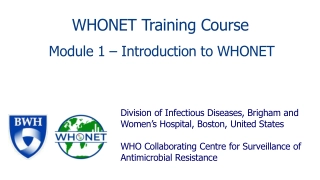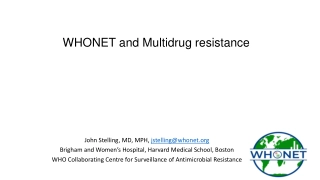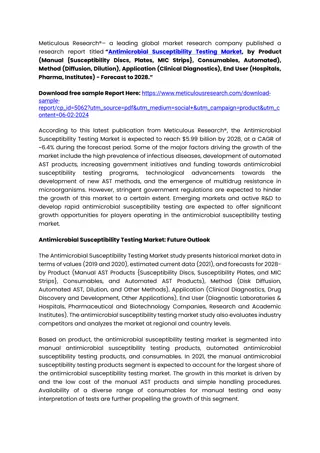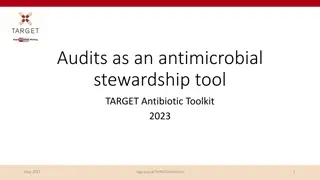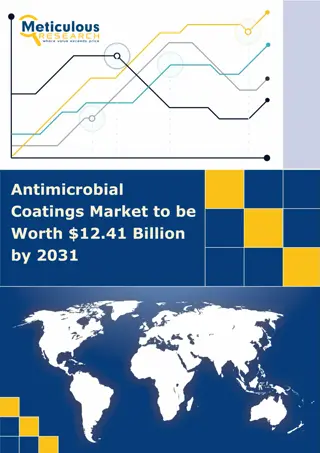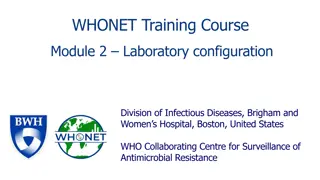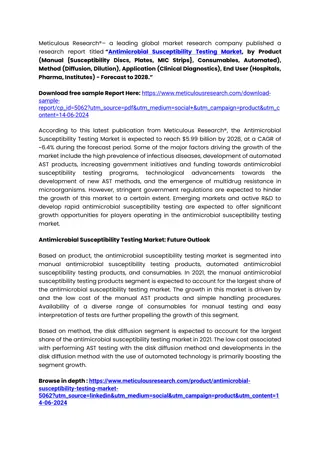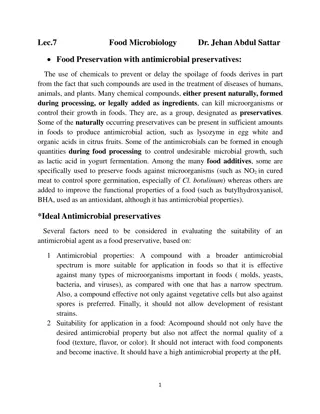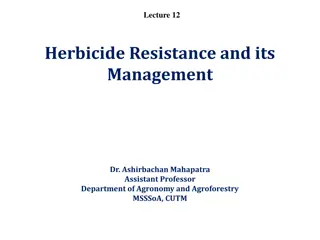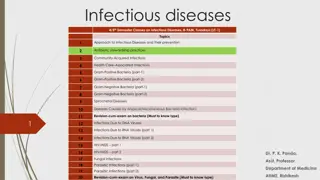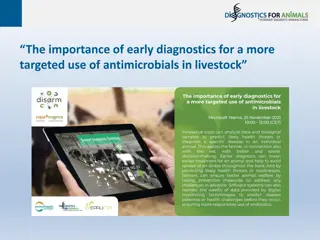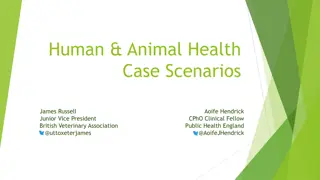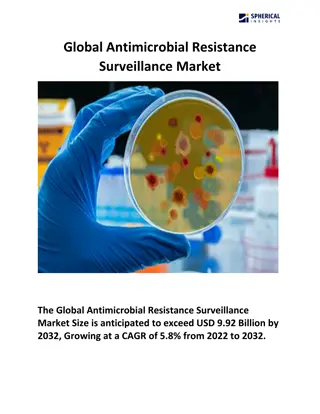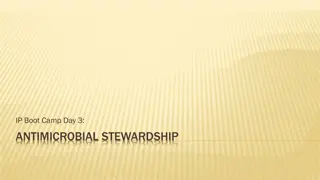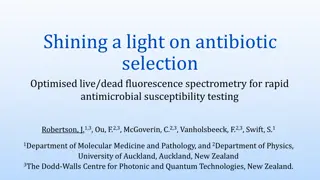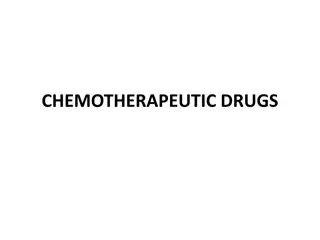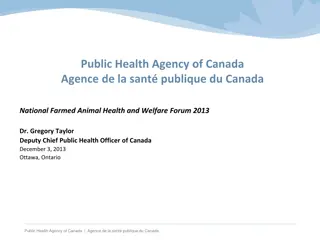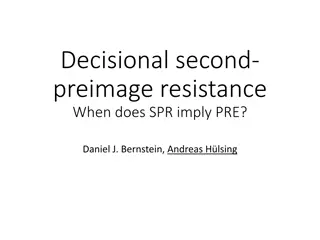Overview of WHONET: A Powerful Tool for Antimicrobial Resistance Surveillance
WHONET is a free software used worldwide for managing and analyzing microbiology laboratory data, with a focus on antimicrobial resistance. It offers features like %RIS analysis, MDR tracking, and outbreak detection, benefiting various sectors including healthcare, research, and policy-making. BacLink facilitates data entry from existing systems, promoting compatibility. This overview covers its significance, features, and implementation in different regions.
- WHONET
- Antimicrobial Resistance
- Microbiology Data Management
- Surveillance Software
- Outbreak Detection
Download Presentation

Please find below an Image/Link to download the presentation.
The content on the website is provided AS IS for your information and personal use only. It may not be sold, licensed, or shared on other websites without obtaining consent from the author. Download presentation by click this link. If you encounter any issues during the download, it is possible that the publisher has removed the file from their server.
E N D
Presentation Transcript
WHONET 2023 and WHO GLASS 2.0 September 27, 2023 John Stelling, MD, MPH, jstelling@whonet.org Brigham and Women s Hospital, Harvard Medical School, Boston WHO Collaborating Centre for Surveillance of Antimicrobial Resistance
Webinar agenda Introductions WHONET Updates Demonstration of GLASS-AMR export from WHONET 2023 Demonstration of GLASS-AMR import into WHO GLASS DHIS Possible topics for future webinars Questions and answers
Updates on WHONET John Stelling, MD, MPH Brigham and Women s Hospital WHO Collaborating Centre for Surveillance of Antimicrobial Resistance Manila 18 September, 2023
Overview of WHONET WHONET is a free software for the management, analysis, interpretation and reporting of microbiology laboratory data with a particular focus on antimicrobial resistance. WHONET is used in over 130 countries for human, animal, food, and environmental samples. While the data come from microbiology laboratories, users of the software include laboratory, pharmacy, infection control, and infectious disease staff, epidemiologists, policymakers, and researchers
Some WHONET analysis and reporting features %RIS and histograms MDR tracking Scatterplot Clinical reports Hospital F Hospital C Nursing homes Hospital B DHIS2 Outbreak detection WHO GLASS Microbiology alerts
Data entry Import with BacLink Most laboratories in the medium- and high-resource world already have computer systems for managing their microbiology data and also many laboratories in low-resource settings. Simple desktop systems: Excel, Access, Laboratory instruments: Vitek, Microscan, BD Phoenix, etc. Laboratory information systems: Commercial or in-house This is an obstacle because they are not directly compatible. But it is also an opportunity! The electronic data have already been stored. The goal of BacLink is converting data from existing incompatible systems into common WHONET files. WHONET BacLink Standard WHONET files Incompatible local systems
Implementation in WPRO Part 1 Country/Area WHONET Use Country/Area WHONET Use Australia Used by some individual laboratories Malaysia National network since early 1990s Brunei Darussalam Not utilized Mongolia Basis for national program Cambodia Compatible with CamLIS New Zealand Not utilized China 1,300 laboratories Papua New Guinea National program supported by Fleming Fund - Hong Kong SAR Used by some individual labs Philippines National network since 1988 - Macao SAR Not utilized Republic of Korea Was basis for national program, but new system in place Japan Compatible with JANIS Singapore Used by some hospitals for local purposes Lao PDR National program supported by Fleming Fund Viet Nam National network since early 1990s
Implementation in WPRO Part 2 Country/Area WHONET Use Country/Area WHONET Use American Samoa Compatible with Vitek Nauru Training in Honlulu 7/2023 Cook Islands Introduced, not used at present Northern Mariana Islands, Comm. of the (USA) Used for several years by one laboratory Fiji Compatible with STARLIMS Palau Used for a few years by one laboratory French Polynesia (France) Training in Honolulu 7/2023 Pitcairn Island (UK) Not utilized Guam (USA) Training in Honolulu 7/2023 Samoa Compatible with Excel files Kiribati Training in Honolulu 7/2023, Visit in 8/2023 Solomon Islands Compatible with Excel files Marshall Islands Training in Honolulu 7/2023, Visit in 8/2023 Tokelau (NZ) Training in Honlulu 7/2023 Micronesia, Federates States of Training in Honolulu 7/2023 Tonga Was used in past, Training in Honlulu 7/2023 Nauru Training in Honolulu 7/2023 Tuvalu Visit in February 2023 New Caledonia (France) Training in Honolulu 7/2023 Vanuatu Training in Honlulu 7/2023 Niue Training in Honolulu 7/2023 Wallis and Futuna (France) Training in Honlulu 7/2023
WHONET Updates Current projects support by WHONET Fleming Fund activities: Lao PDR, Papua New Guinea, Viet Nam. CAPTURA, RADAAR, WHONET Strategic Alignment Grant COMBAT-AMR: Fiji, Papua New Guinea, Samoa, Solomon Islands. Project ended. Phase 2? American Society of Microbiology CDC Pertussis project: Brazil, Mexico EARS-Net, PATH, CRDF Global (Japan), MSF, Wellcome WHONET Training Centre Development of an OpenWHO course WHONET Discussion Forum WHONET User Survey
Changes to RIS and Sample files in GLASS-AMR 2.0 RIS file Additional specimen types, organisms, and antibiotics Removal of ATC categories, e.g. Carbapenems = J01DH Refinement of GENITAL to UROGENITAL , ANOGENITAL , and PHARYNGEAL Samples file Additional specimen types NUMINFECTED = Number of patients infected with a GLASS pathogen If you try to submit GLASS 1.0 files to the GLASS 2.0 platform, you will receive Blocking errors 11
Use of the RIS and Samples files RIS file Epidemiology of antimicrobial resistance for key specimen type, organism, antimicrobial combinations stratified by priority variables Samples file Quantifying the amount of testing performed by the laboratory, e.g. Number of blood cultures , including: 1) specimens with GLASS pathogens; 2) specimens with non-GLASS pathogens; and 3) negative samples, such as No growth and Normal flora . This is of value for tracking the amount of testing that is performed by the laboratory Diagnostic stewardship It can also be used to track metrics such as %Positivity The Samples file has little value if you do not include statistics from all positive and negative samples and there is no need to upload it to the WHO GLASS IT platform 12
WHO GLASS-AMR Variable Infection origin Epidemiologically, it is useful to distinguish statistics from infections of hospital origin (HO) from infections of community origin (CO). One approach is to do individual patient review of all samples to make a decision. But this is impractical, time-consuming, and subject to significant variability between individuals. A simpler proxy approach is much more practical and standardized. If a sample is collected in the outpatient setting, we will call it a CO infection. If a sample is collected inside a hospital location: If the sample is collected on Hospital Day 1 or 2, then we consider this to be a CO infection requiring hospitalization. If the sample is collectyed on Hospital Day 3 or later, then we consider this to be a HO infection. This definition is not perfect and is not always correct on a case-by-case basis, but it has practical value for statistical purposes. It does require the Date of admission , which often is not available in laboratory databases. Without the date of admission, WHONET will consider the origin of hospital isolates to be Unknown = UNK . 13
Possible topics for future webinars WHONET 2024 release WHONET analysis and reporting features WHONET isolate and outbreak alerts WHONET Quick analysis reports WHONET DHIS2-AMR module WHONET Automation Tool WHONET AST interpretation engine WHONET Community WHONET Training Center WHONET Discussion Forum One Health features of WHONET FAO and InFARM Country-, region-, and/or language-specific sessions





